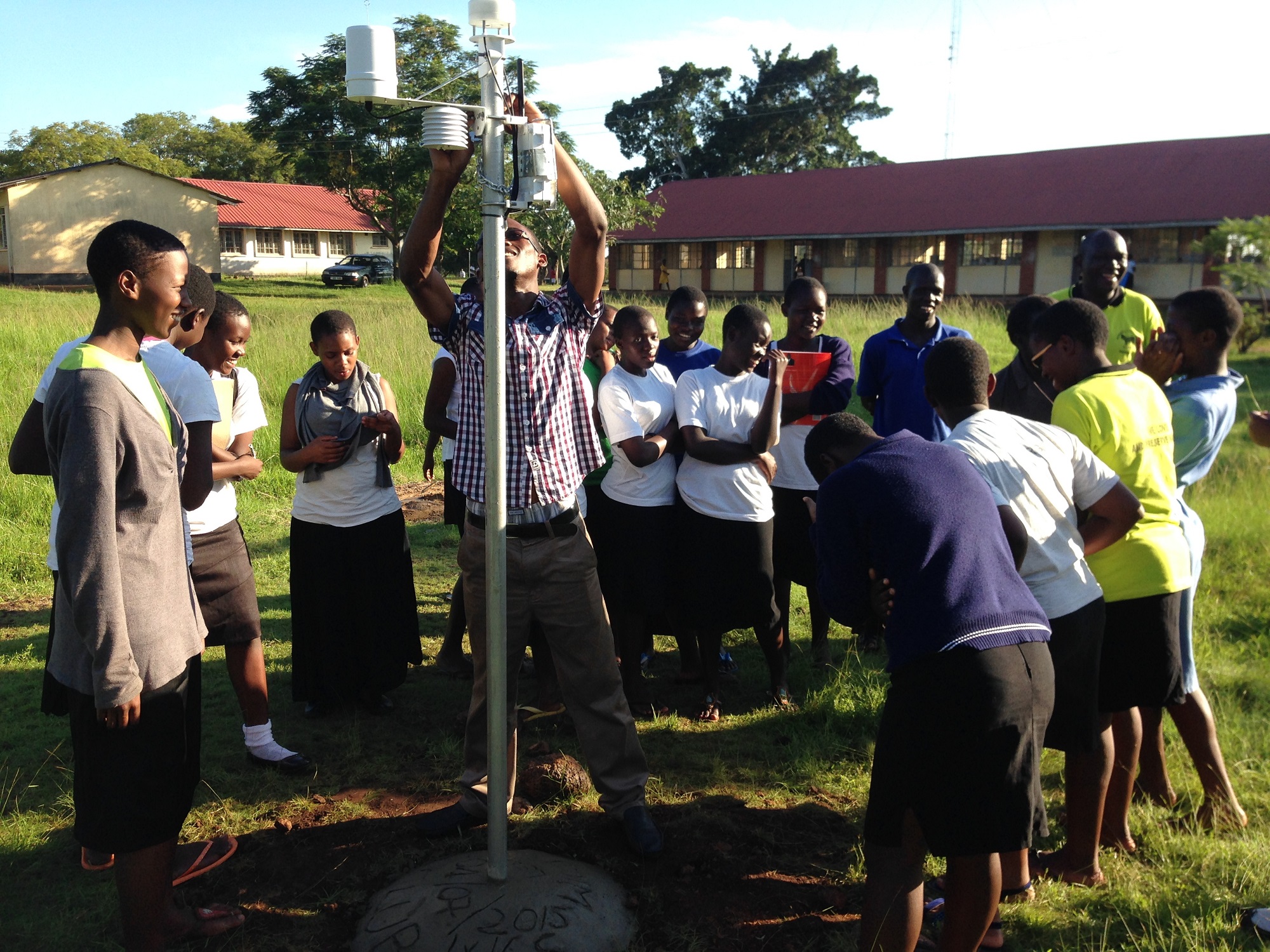Nick van de Giesen is working on a network of weather stations in Africa to help farmers. He hopes that the project will gain momentum after the climate summit in Glasgow.
Tahmo has now installed more than 600 weather stations in 20 countries in Africa. (Photo: Tahmo)
Will it be drier or wetter? That climate change is affecting the weather conditions in Africa is indisputable. How it is doing so is still unclear. It seems that the weather is becoming more unpredictable in many places. This unpredictability is making things difficult for farmers. They do not know the best time to sow their seeds anymore.
What they need is better weather forecasting, believes Professor of Water Management Nick van de Giesen (Civil Engineering and Geosciences). In 2013 he was one of the founders of the Tahmo (Trans-African Hydro-Meteorological Observatory) project whose objective was to install 20,000 low cost weather stations in African countries.
To date, more than 600 stations in 20 countries have been installed, mostly at schools. For their work Tahmo received funding from various sources, including the World Bank. The weather stations are powered by tiny solar panels and use GSM telephones to report data on rain, sun, temperature, air pressure and wind every five minutes.
Only one hundred stations across Sub-Saharan Africa
Tahmo is of course not the only one. There are more weather stations on the continent and every country has its own meteorological service. And apart from Tahmo there are also other private-public projects. But most data from the weather stations do not find their way to the official bodies. If you look at the number of weather stations that the World Meteorological Organization (WMO) can draw on to assess the weather in sub-Saharan Africa, you would be surprised. There are only about 100 of them, and they are stations at airports. And they only work about 65% of the time on average.
The Washington Post recently investigated the district of Narok in Kenya, to find the head of the meteorological service with his head in his hands. Only a fraction of the weather stations in his district were working. He also had access to the data of nine Tahmo weather stations, but he did not have the technical facilities to integrate Tahmo’s data in the rest of his data. Nick van de Giesen knows the challenges in Africa all too well. He explains to Delta what problems he is facing.
Setting up a mesh network of weather stations is a major challenge. What are the biggest bottlenecks?
“How hard can it be? We can install a station for EUR 3,000 which will operate for three years. This is much cheaper than what meteorological services in each country pay for their own stations. But this is actually the reason that some people at the national weather services in some countries in Africa are reluctant to work with us. Many see us as a threat.”
‘If a screw comes loose an expensive consultant needs to be flown in’
Why?
“Just imagine you are the national weather service and Tahmo comes along and says ‘we can do it better and more cheaply’. We see that the national weather services that are not very strong and that receive little funding from the governments do not want to work with us. We are working well with the national weather services that work fairly well. It’s going pretty well in Kenya. But in a country like DR Congo (that is about as large as West Europe, Eds.), we only have six stations.”
There’s a long way to go if you want to install 20,000 weather stations.
“Even if it’s only 2,000, we will still have achieved something.”
Is money the major obstacle?
“Well, that’s what it boils down to. National weather services in African countries receive very little funding from their governments. The weather there is less predictable than here and there is virtually no data so the forecasts are poor. So do you really want to spend your money on them? Governments are reluctant.
“And if money is made available from international organisations, it is rarely used to tackle the problems holistically. It may be spent on things like equipment that the local people may be unable to operate themselves. If a screw comes loose an expensive consultant needs to be flown in to solve the problem.”
Should the WMO come up with an integrated plan to solve the problem?
“The WMO is now talking about Systematic Observations Financing Facility, a project that should lead to gathering data using a standardised methodology worldwide. It is being discussed in relation to COP26, the forthcoming climate summit in Glasgow. The WMO needs EUR 40 million for this project. We hope we can be part of it. We have plenty of experience in gathering and processing data. I just hope that it won’t be yet another project that dries up. The world cannot allow large weather blind spots on earth.”
Do you have a question or comment about this article?
tomas.vandijk@tudelft.nl


Comments are closed.